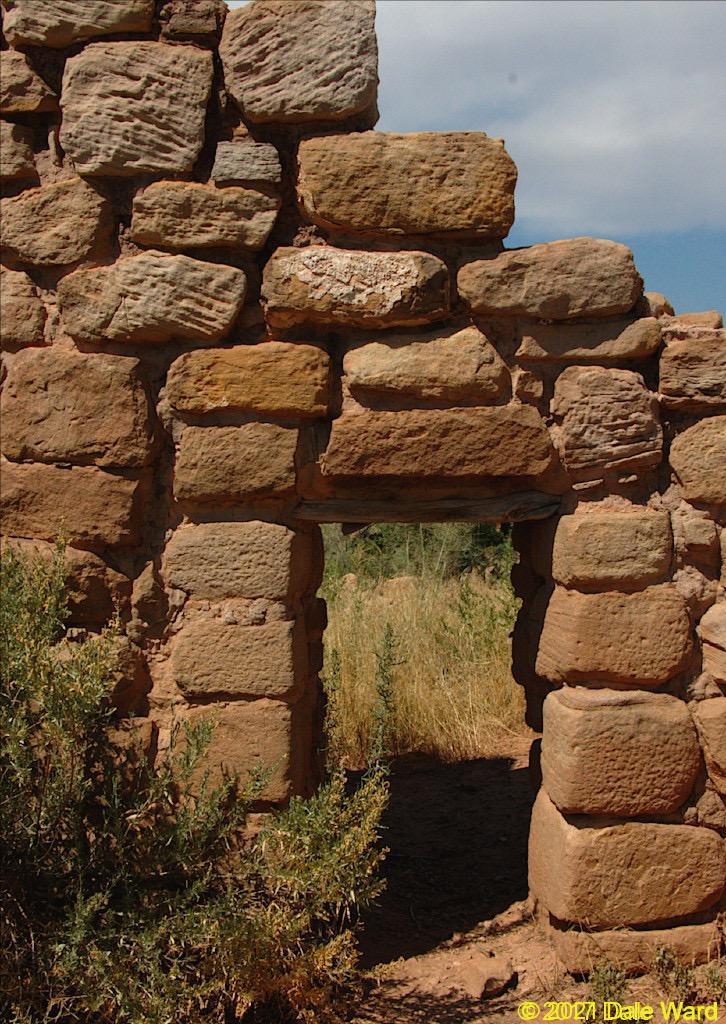Cannon Ball Mesa Ruins
One of my favorite local ruins sites is at Cannonball Mesa.
Laurie and I were unaware of the site when we first moved to this area. We stumbled upon the ruins when we were out hiking, and it was quite a spectacular feeling. The ruins were obviously already known, since there was a fence around them, but at the time it felt as though we had discovered them. They rose shockingly and unexpectedly out of a desert which had seemed so hot, dusty and empty just moments before.
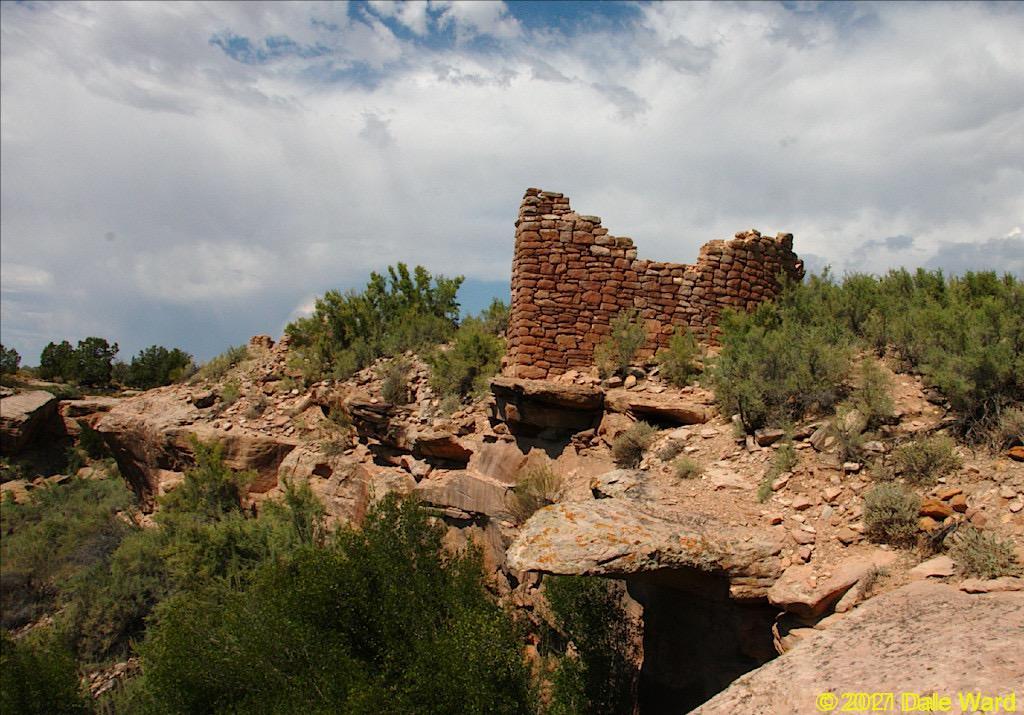 Ruin on the rimrock. You can see that the ground is littered with rubble from other ruins.
Ruin on the rimrock. You can see that the ground is littered with rubble from other ruins.
The road up to the Cannonball Mesa is west of the lower Sand Canyon trailhead, and is a little bit rough. I thought this would be a fine trip for the jeep. So, on a hot September day, I packed my camera and headed out for McElmo Canyon and Cannonball Mesa.
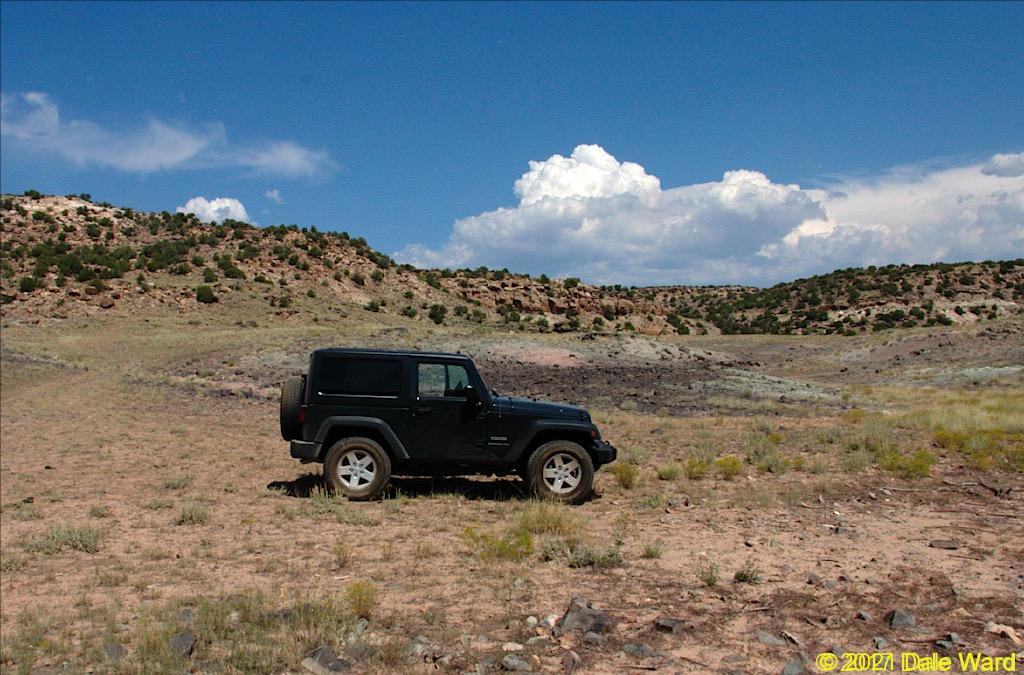 On the way to Cannonball Mesa.
On the way to Cannonball Mesa.
The monsoons were still giving us occasional afternoon thunderstorms, and the air was hot and still in anticipation. We’ve had enough rain that there was water in the cattle tanks, but you could tell that the tanks were drying fast.
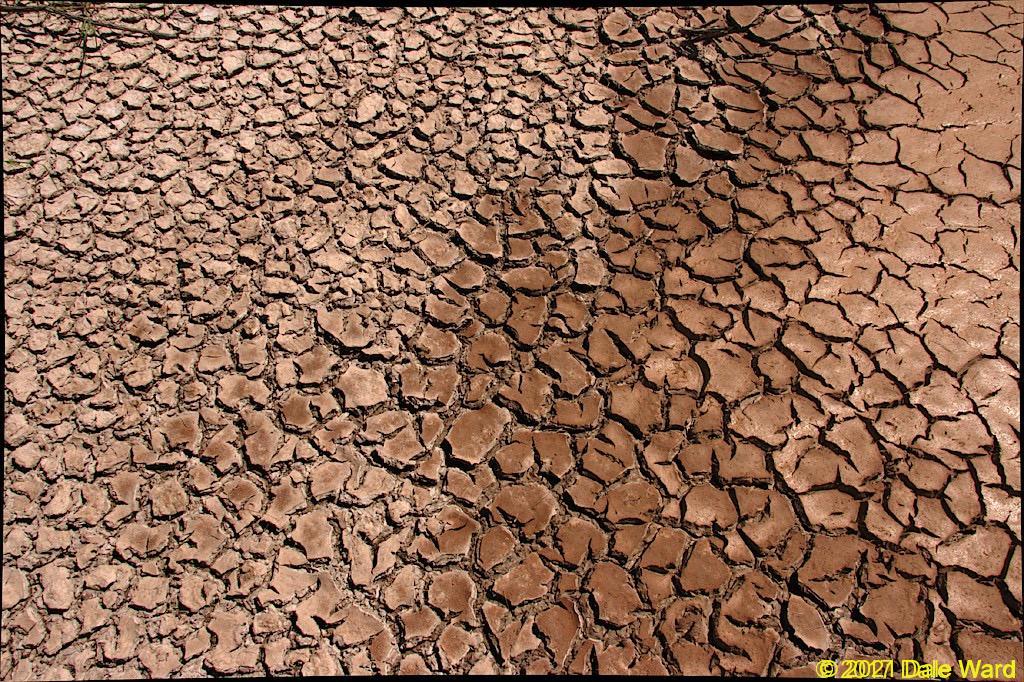 The cattle tanks were surprisingly full due to the monsoons, but they were drying fast.
The cattle tanks were surprisingly full due to the monsoons, but they were drying fast.
There were a couple of dead cows on the side of the trail on the way in, hides as dry and stiff as iron. I think they’ve been there for a long time. I vaguely recall seeing them years ago, on another trip. This would be a hard place to live.
No Country for Old Cows, I guess.
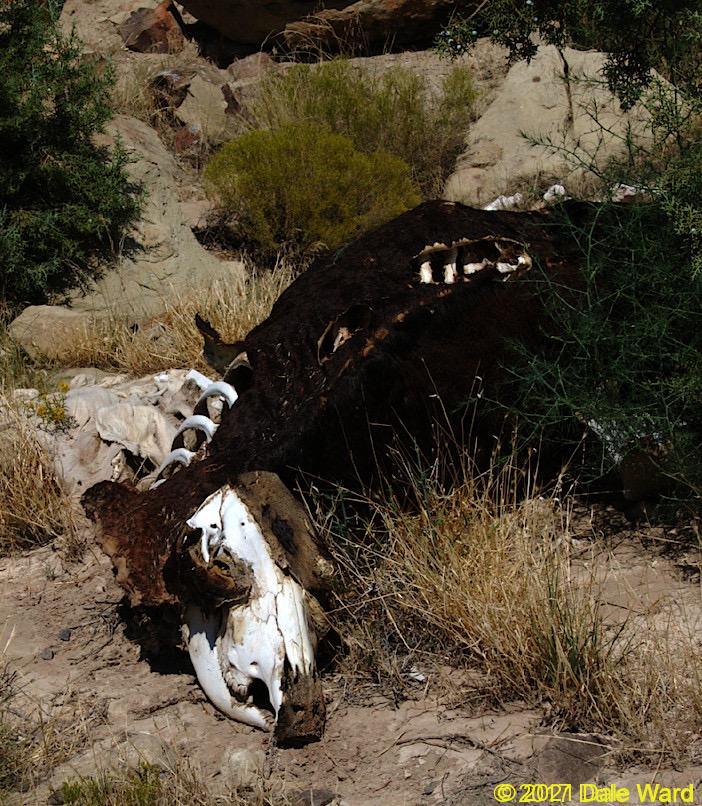 There were a couple of old cow carcasses along the way.
There were a couple of old cow carcasses along the way.
The jeep handled the trail with no problems, gliding over the rocks and ruts as the sun glared down at us. It was an almost surreal experience, sitting in the AC as the trail rolled by like a movie. I was at Cannonball Canyon sooner than I had expected.
And it was even nicer than I remembered. The ruins were clustered around the head of the Cannonball Canyon, like a little lost city. The canyon was a short, shallow canyon that empties into the larger Yellowjacket Canyon, and I could look from the ruins down into the larger canyon.
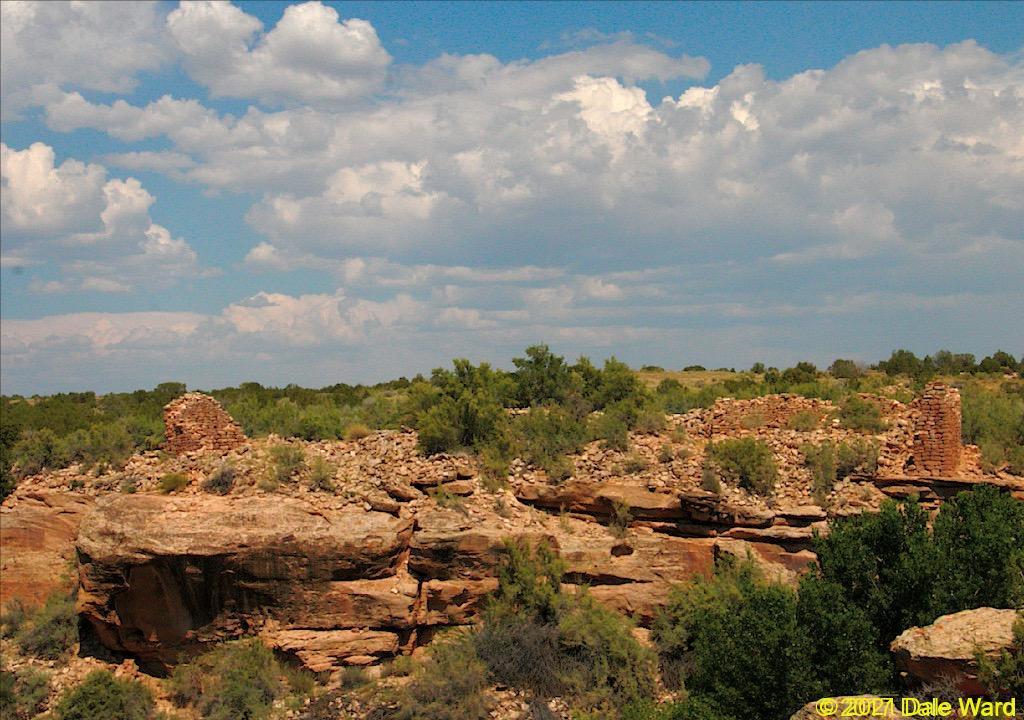 Looking at the head of the canyon. You can start to get a feeling for how many ruins there were.
Looking at the head of the canyon. You can start to get a feeling for how many ruins there were.
The site was occupied until about 1280 AD - roughly the time at which the nearby Sand Canyon and Castle Rock sites were raided and abandoned. I have not read that this site was abandoned subsequent to a raid, as were Castle Rock and Sand Canyon, but I would not be surprised if that were the case.
This was one of the first sites in our area to be excavated. The excavation was done by Sylvanus Morley in 1908. I’m not sure whether or not he backfilled the ruins, but somebody had. The excavated below-ground kivas had been filled in with dirt, a good way to preserve them. At least one of the skeletons Dr. Morley excavated had an old, partially healed skull injury that looked like it had been inflicted with a sharp object. Stone axe, maybe?
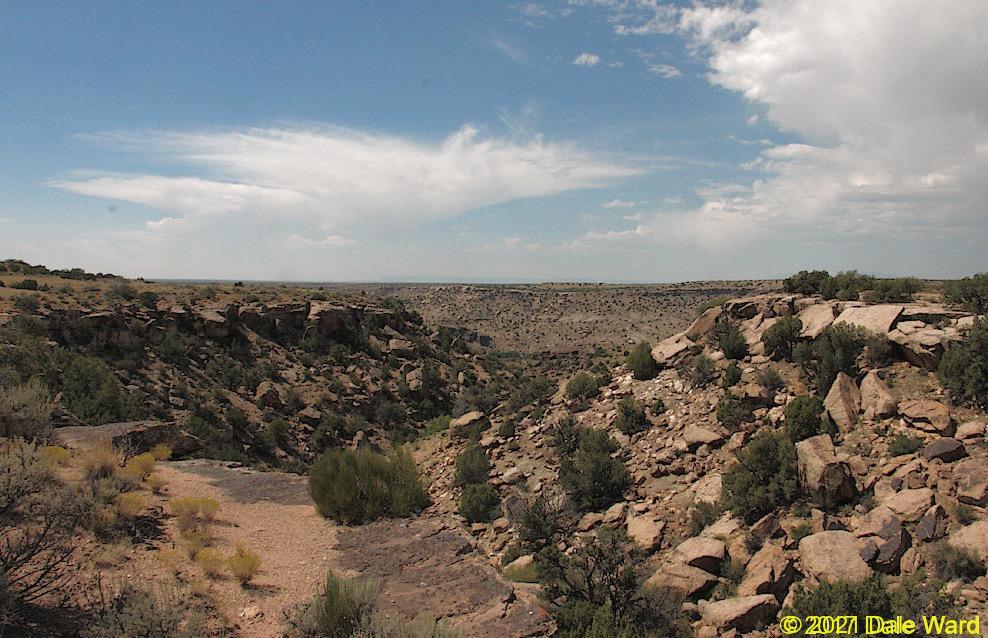 Looking down Cannonball Canyon and into Yellowjacket Canyon, with the ruins behind me.
Looking down Cannonball Canyon and into Yellowjacket Canyon, with the ruins behind me.
There were the ruins of a couple of large pueblos around the head of the canyon. The ground was covered with rubble from collapsed walls. The feeling was very much that of being in an old, abandoned village.
 Ruin on the rimrock. You can see that the ground is littered with rubble from other ruins. There is a spring in the canyon below.
Ruin on the rimrock. You can see that the ground is littered with rubble from other ruins. There is a spring in the canyon below.
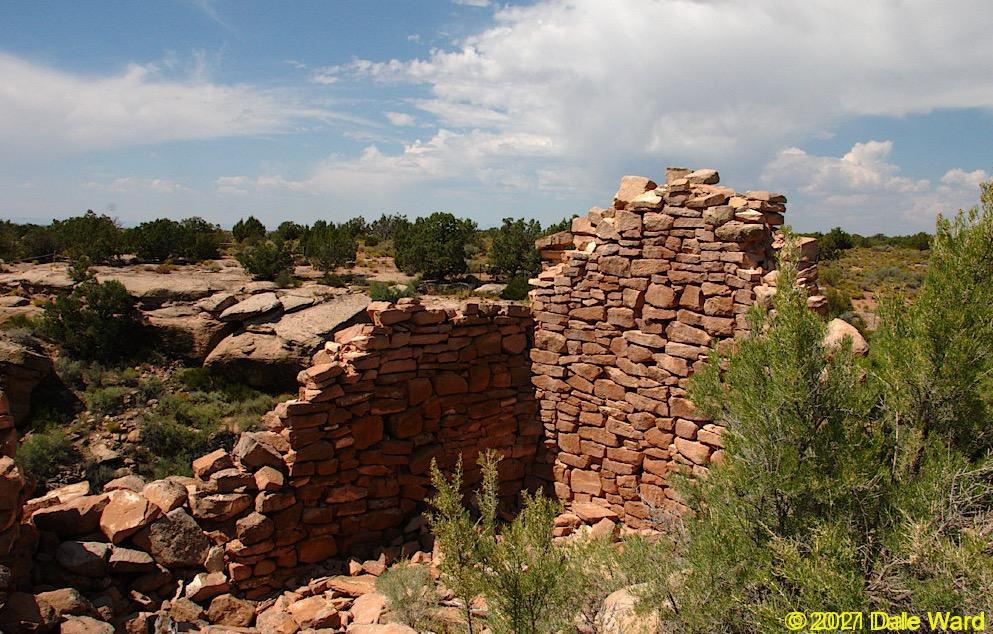 Corner of a large building at head of the canyon.
Corner of a large building at head of the canyon.
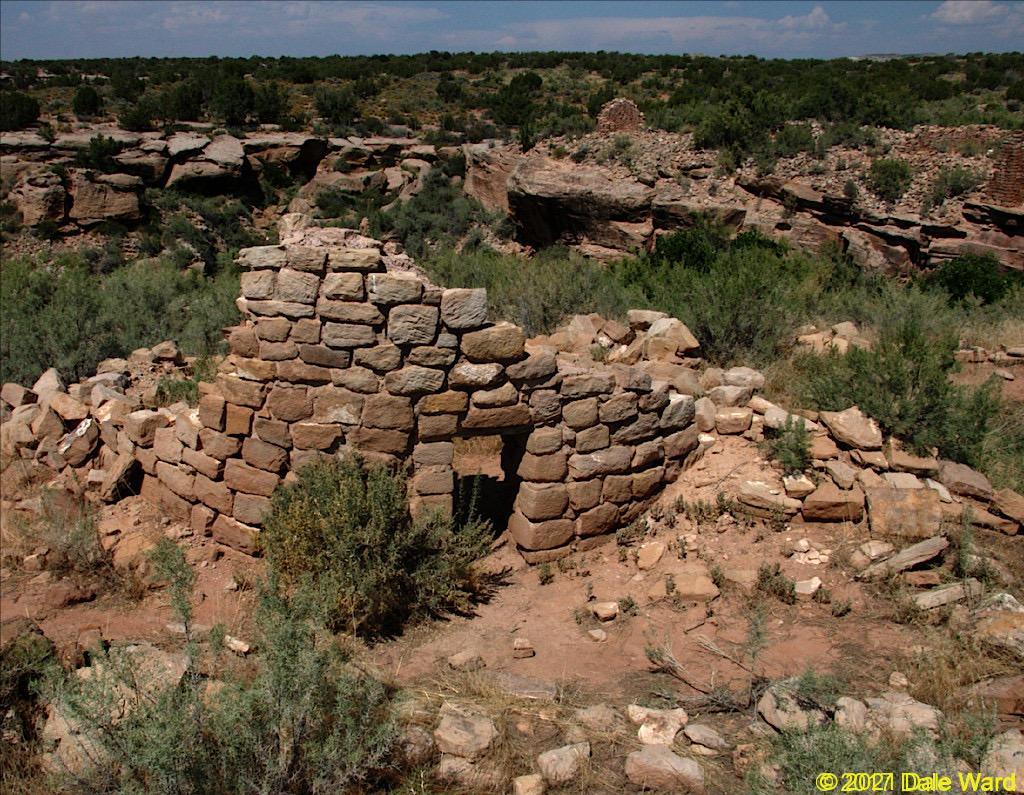 Small doorway, perhaps 3 feet high. This wall was near a couple of the buried kivas.
Small doorway, perhaps 3 feet high. This wall was near a couple of the buried kivas.
On a boulder in the canyon bottom were the remains of a tower.
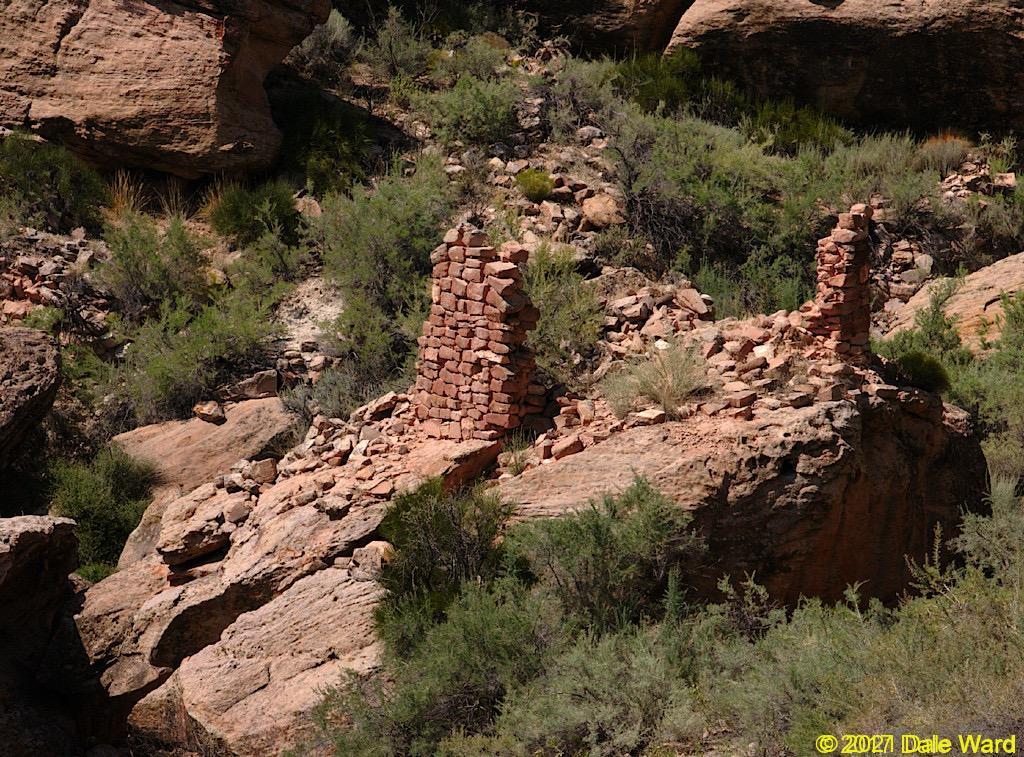 Tower ruin on a boulder, in Cannonball Canyon. There was a small spring nearby.
Tower ruin on a boulder, in Cannonball Canyon. There was a small spring nearby.
What I like about this site is its isolation. You are out in the desert with no noise, beauty in all directions.
I think about how hard it would be to even subsist out here, let alone build a civilization. And I’m left in awe by what the Anasazi achieved, how different from our own their lives must have been. And how similar, in some ways.
This was a fine trip, indeed.
